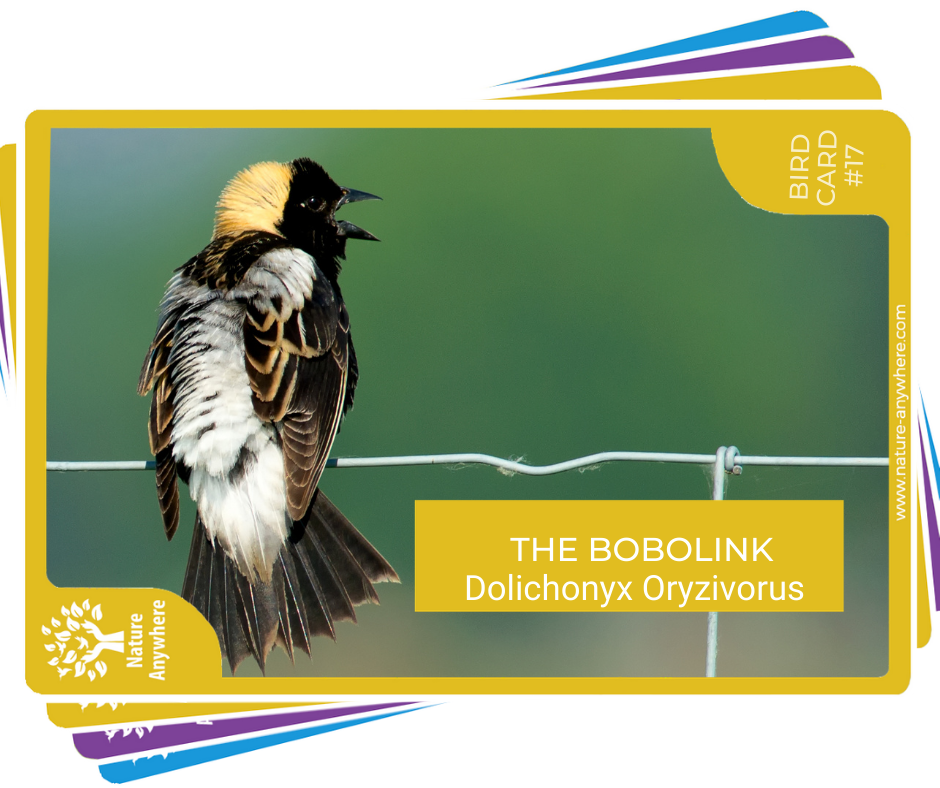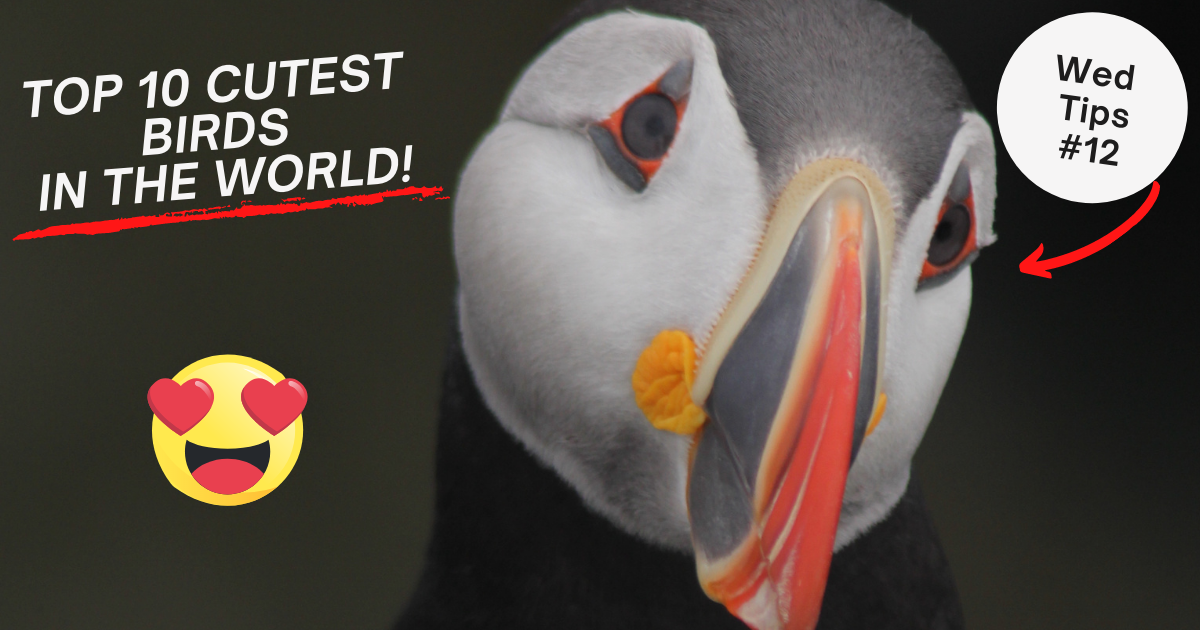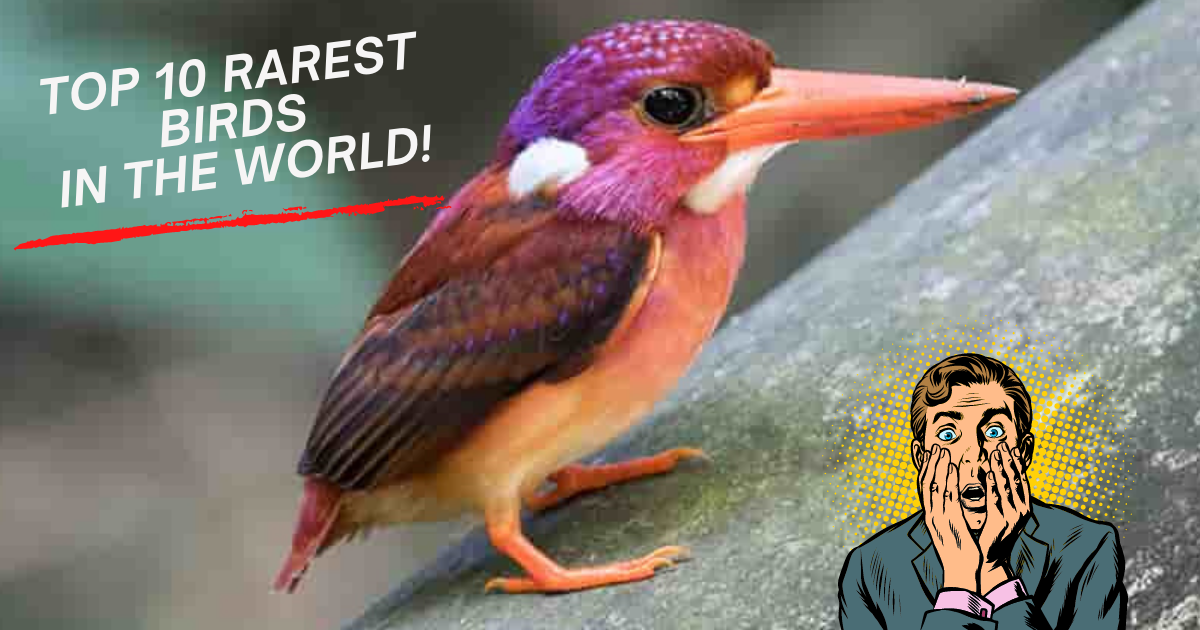
Bob-o'-link, bob-o'-link,
Spink, spank, spink;
Snug and safe is that nest of ours,
Hidden among the summer flowers;
Chee, chee, chee...
Hopping and chee-chee’ing around our grasslands, bobolinks are the only member of the genus Dolichonyx. Unfortunately for us they are in decline.
This is truly saddening as no other North American songbird has such a beautiful white back and black underparts, or such sweet sounds as the melodious male chirp - not to mention the unique blonde wig on his head!
They were formerly known as the "rice bird" (their scientific name, Oryzivorus, means rice-eater) for their habit of eating cultivated grains. Bobolinks breed in North America and the southern Canadian territories, and migrate all the way to South America in the winter.
This means an astonishing amount of travel. They can fly up to 1100 miles in a single day (a lot for a 1 oz bird!) then stop to catch their breath for days or weeks.
Bobolinks molt twice a year, completely changing their feathers. Once in the winter, when the male grows new feathers with yellow at the edges and once in summer during the breeding season, where he molts again to show the females the 'great reveal’ of his “inside out” tux! underparts with black on the inside, white on the outside.
Bobolinks are in decline due to a bunch of reasons: they were considered agricultural pests and therefore many were shot, some were sold as pets in South America and some even used for food in Jamaica where they arrived so plump from their migration they were called “butter birds.” But the main reason for the Bobolink's disappearance is the decline in meadows and hay fields.
Farmers can actually help bobolinks by creating their own breeding habitat, mowing the fields only when the fledglings have flown.

LOOKS
“Bobolink” is pronounced baa-baa-link, like baa baa black sheep. They look like British judges from the 19th century, with their wigs and black garb. No other bird looks like the male bobolink. Not even the female.
Adults weigh about 1 oz (that’s about 8 quarters) and are 6.3–7.1 long. They are mostly black with creamy napes and white backs and rumps. They have very short bills like their relatives, the orioles and blackbirds. Females are usually light brown with black streaks on the back and wings, and have dark stripes on the heads
The oldest Bobolink on record was a female 9 years old.
EATS
Bobolinks, like many songbirds, eat insects such as beetles, grasshoppers, caterpillars, wasps, ants, spiders and millipedes. During migration, they eat the seeds of weeds, grasses and grains which at times cause southern rice fields to take a toll. In tropical areas in winter, bobolinks add berries to their diet.
SOUND
Just like the poem above, it seems like William Cullen Bryant really captured the sounds of the bobolink. Males chirp with a warning chunk, chenk and see-yew when he feels threatened and a melodious chirp and buzzing sound when courting a female. The males have 2 types of songs, each one composed of 25–50 notes in a fixed sequence, lasting about 3.5 seconds. This melody will become pointy like a staccato when going after other males. When females respond to adversity they make chunk, zeep and quipt notes.
BOBOLOVE

Bobolinks are polygynous, meaning that each clutch of eggs the female lays in the breeding season belongs to a different father.
Bobolinks prefer freshly harvested hay or lush grassy fields as breeding territories.
The female chooses the nesting site. She usually selects a small space on tall grassy ground and creates a small depression there. She builds the outer part of the wall with rough dead grasses and weeds, then fluffs the inside up with soft grasses on which to lay the eggs.
The eggs have a unique coloring: pale bluish-gray to rosy-brown eggs, with irregular brown spots. The female incubates them for a period of 14 days, then after the hatchlings arrive, she and the male bobo will take care of them for another 10-11 days before they finally leave the nest.
When they leave home, they are not able to fly just yet so they hide among thick vegetation for a few more days until their feathers have fully grown. The young’uns survive thanks to flocks of families foraging together, teaching them to become independent and to fend for themselves. Bobolinks are just as social even when not breeding together. After the breeding season is over, they stay and roost together.

After the breeding season is over, bobolinks travel to freshwater marshes and coastal areas to molt before their great migration journey.
FUN FACTS
- A flock of Bobolinks is called "a chain." They were also given the nickname "skunk blackbird" due to their breeding plumage: the only bird with a black front and white back.
- A bobolinks' job is never done: even though bobolinks are daytime foragers, during migration season they sometimes feed after dark on bright nights to build up fat reserves for their long flight to South America.
- One female, known to be at least 9 years old, presumably migrated annually, a total distance equal to traveling 4.5 times around the earth at the equator!
- Their migration abilities are extraordinary: besides using the night sky for navigation, they use the cavity of their noses as well as the tissues around the olfactory bulb and nerve to keep them aligned with the earth’s magnetic field.
- In some nests, the little ones are fed by more than one attending adult. They are possibly the other fathers of former offspring of the same mother!




1 comment
Jeff
I live in Philippines and birds are not common here….much more common in America
Leave a comment
All comments are moderated before being published.
This site is protected by hCaptcha and the hCaptcha Privacy Policy and Terms of Service apply.